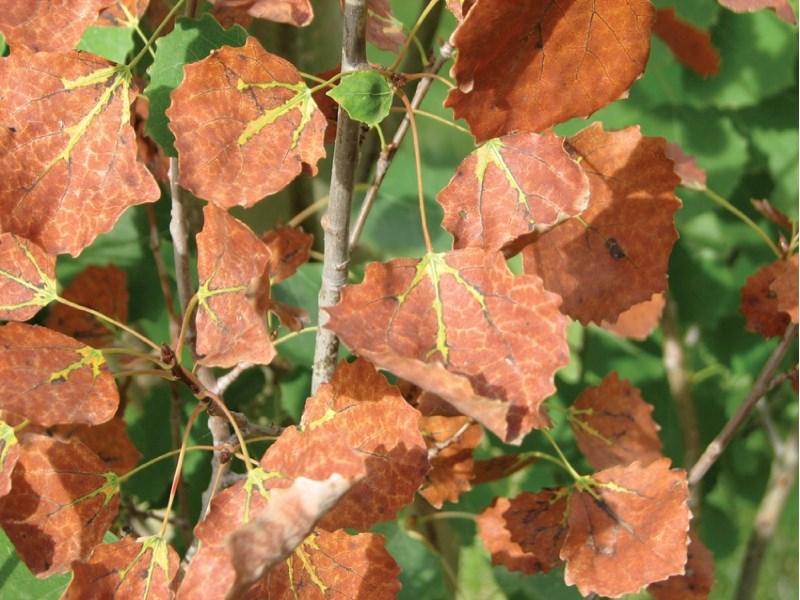Concern over a new tree disease has been increasing across the province in the past few years, according to a commercial horticulture specialist.
Robert Spencer, with Alberta Agriculture and Rural Development, is hoping to increase awareness of Bronze Leaf Disease (BLD), because it has been determined that is present in multiple Alberta cities, including in and around Calgary.
“I think it’s safe to assume there is some in that area (Rocky View County),” Spencer said.
“I think it’s something people need to be aware of. The purpose is to get people to think about it, keep their eyes open and then go from there with a more educated approach to manage it.”
BLD, which turns affected parts of a tree a deep reddish/bronze colour, is primarily found in poplar and aspen trees. It is spread between trees by spores, but will also spread within the plant as the fungus develops systemically. Given the right conditions, this disease can kill an infected tree in three to five years.
The disease’s characteristic symptoms, shown in late summer, will affect plant parts by discolouring the tip and edges of the leaf towards the interior. Infected leaves will often remain on the plant throughout the winter.
“Columnar-shaped poplars and aspens represent some of the top-selling and most planted tree species in Alberta,” Spencer said. “In around 2009, BLD was found on a trembling aspen sample in Manitoba. This is a concern, as these aspens represent a large part of the native tree population on the Prairies. We want to manage it early and manage it quickly.”
Despite the concerns over the potential development and impact of this disease in tree populations, Spencer advises considering a number of points when thinking about planting tree species that can be affected by BLD.
Despite the concerns over a “new” disease in poplar and aspen species, the fact is that there are many abiotic stresses, disease and insect pests that can affect trees and these particular species. Disease can be introduced from other areas, so planting a healthy, disease-free tree does not guarantee that tree will remain healthy forever.
Most municipalities and nursery professionals in Alberta are aware of the potential impact of this disease and have been making every effort to prevent its development and spread in their plant material and plantings, Spencer said.
“There is a risk of spread into native trembling aspen stands. By making an effort to control BLD in Swedish columnar aspen and tower poplar, it is hoped that spread to these other species can be prevented,” he said. “Our industry is aware of it and doing everything they can to deal with it from a plant material side, so now it’s up to municipalities. We just need to be aware and then be prepared to act if something pops up.”



